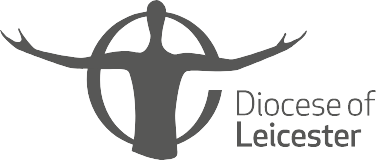News
Praying with Icons: Abba Mena
Each day we begin our lunch time prayers with a reading from John 15:14-15:
‘You are my friends if you do what I command you. I do not call you servants any longer, because the servant does not know what the master is doing; but I have called you friends, because I have made known to you everything that I have heard from my Father’.
Take a seat and fix your gaze on the image of Jesus. Give all your attention. Lose yourself in His image. Begin to see things, and yourself, with Gods eyes. You are a friend of God.
Abba Mena
Nowhere is this image of God drawing close to us more profoundly demonstrated than in this, the oldest known Coptic icon, written in the 8th century in Egypt and depicting Christ and Abba (Abbot) Mena (285-309 A.D.) currently hanging in the Louvre in Paris.
The French, however, do not call it ‘Christ and Abba Mena’ they title it ‘Christ and His Friend’. Reflection upon this icon can be used to demonstrate what it is to live the Christian life, to do pastoral work and, more specifically, how to form disciples in Christ.
Christ, to the right, is slightly taller than the figure on the left, the inscription ‘Saviour’ is written near him. In a sign of introduction and as a protective gesture, his right hand is placed on the left shoulder of Saint Mena who can be identified by the inscription placed to the left of his halo, ‘Apa Mena superior’.
In the icon we notice the unusual position of Christ with his arm around ‘the friend’. This embrace can be seen as demonstrating the change of status we have with Christ. He no longer calls us servants but rather friends.
No longer do I call you servants for the servant does not know what the master is doing; but I called you friends, for all that I have heard from the Father I have made known to you. John 15:15
The second thing this icon teaches about the relational love of the Lord for us is the position of the eyes. Christ has an eye on the friend and another looking out. We need to follow Christ’s example, we can have one eye on Christ and one eye on those under our care.
Looking to Jesus the pioneer and perfecter of our faith, who for the joy that was set before him endured the cross, despising the shame, and is seated at the right hand of the throne of God. Hebrews 12:2
This icon shows the Lord Jesus Christ holding the Book of the Gospels, symbolising that He is the Word, the Truth. We are like the friend in the icon, we also have been given something to share, as signified by the small scroll that the friend is holding but we are only given a small part of the truth of God, our knowledge is always growing yet always remains incomplete.
The next detail of this icon to consider is that Christ has no feet. The fact that the friend has feet can be understood as being sent out like the Father sent the Son.
Christ has no body but yours,
No hands, no feet on earth but yours,
Yours are the eyes with which he looks
Compassion on this world,
Yours are the feet with which he walks to do good,
Yours are the hands, with which he blesses all the world.
Yours are the hands, yours are the feet,
Yours are the eyes, you are his body.
Christ has no body now but yours,
No hands, no feet on earth but yours,
Yours are the eyes with which he looks
compassion on this world.
Christ has no body now on earth but yours
- Teresa of Avila (1515–1582), Christ Has No Body
Finally, there is a silence found in this icon as in all icons. Christ and His friend have their mouths closed. The friend, however, is painted with very prominent ears. We are to primarily listeners of God. There is a silence in the icon; a prayerful silence where not a word is spoken. Mother Teresa was asked what her secret was and she said, “My secret is simple, I pray.” So someone asked her what she said when she prayed and she said, “nothing, I listen.” So the interviewer asked, “OK, when you pray what does God say?” And Mother Teresa answered, “Nothing, He listens.” Prayer is a mutual listening.
Perhaps as we look at this icon we might hear again the call of Christ to his ‘friends and brothers’ to join Him on pilgrimage.
Reflection from ‘Fuel for Pilgrims’ can be found here:
https://fuelforpilgrims.wordpress.com/2015/08/18/the-icon-of-christ-and-his-friend/

